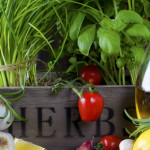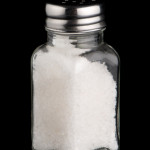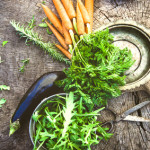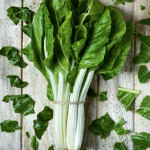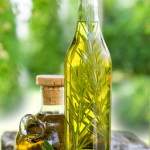A little more protein and a little less sugar really do add up to living a healthier lifestyle. Here are nine easy hacks to keep you on track.
Skip the butter and sour cream. Salsa is your baked potato’s new best friend.
Peanut butter powder will flavor smoothies without the fat.
Move over mayonnaise. Greek yogurt can take its place in salads and on sandwiches.
Waffle and pancake upgrade: Use warm applesauce or sautéed fruit instead of syrup.
Add a slice of tomato, pepper strips, or shredded spinach to grilled cheese sandwiches.
Add cannellini or butter beans to smoothies for a thick, creamy texture and add protein and fiber.
Use bone broth instead of regular chicken broth for added protein.
Fill your plate with vegetables swap-outs like cauliflower rice or zucchini noodles.
Instead of steaming or boiling, try roasting vegetables. The caramelized flavor is hearty and satisfying.
“Work With What You Got!”
©Tiny New York Kitchen © 2018 All Rights Reserved
Let’s face it; most of us eat way too much salt. A high-sodium diet can increase risk of high blood pressure (hypertension), which can lead to cardiovascular and kidney disease. The Dietary Guidelines for Americans recommend limiting sodium intake to less than 2,300 mg per day, which is about 1 teaspoon of salt. The good news is that reducing the amount of salt you use will retrain your taste buds to sense other flavors. You won’t even miss it.
Bland food is such a bore, but how can we keep sodium in check without sacrificing flavor?
Here are some suggestions to reduce salt in your diet:
Remove the salt shaker from the table when you eat.
Limit process foods, including cured, pickled, salted, or brined products.
Focus on fresh or frozen fruits and vegetables without sauces or seasonings.
When choosing canned options, look for “no salt added” or “low sodium.”
Cook at home so you have control over how much salt you add.
Flavored vinegar, onions, garlic, and citrus also add tons of flavor without the sodium.
Herbs and spices are the key to flavor. Add dried varieties during cooking and fresh herbs at the end of cooking or when plating a dish. Thyme, mint, lemongrass, dill, basil, oregano, chives, and parsley are great herbs to use. Spices like pepper, ginger, chili powder, and cinnamon are excellent spices to flavor your food.
“Work With What You Got!”
©Tiny New York Kitchen © 2018 All Rights Reserved
Use The Leaves
The leafy green stems of beets or radishes make a tasty side dish when sautéed with garlic and olive oil. Try blending carrot greens with olive oil, Parmesan cheese, and a squeeze of lemon for a tasty pesto.
Slice The Stems
Broccoli stalks are the perfect size for spiralizing and make a crunchy addition to salads.
Zest The Rind
Citrus peels are packed with sweetness. Their flavorful zest will elevate any marinade, vinaigrette, or dessert.
Vegetable Stock
And, of course, you can make homemade vegetable stock.
“Work With What You Got!”
©Tiny New York Kitchen © 2018 All Rights Reserved
The colder months are when a rainbow of fruits and vegetables reach their peak, from dark green kale to sunny citrus.
Jicama
Pronounced hee-cah-ma, this winter vegetable is crunchy and refreshing. Its mild flavor makes it perfect for salads, salsa, or as crudités for your favorite dip. Use a vegetable peeler to remove its tough skin. When chopping, pick the ones with taut skin and firm flesh.
Turnips
This phytonutrient-rich root vegetable becomes sweeter as you cook it, shedding any bitterness along the way. The greens are particularly good for you and make an easy side sautéed with some garlic in olive oil.
Beets
Putt off by the long cooking time for beets? Reach for conveniently precooked packages in the produce section, or enjoy them raw. Peel them and grate them into salads or smoothies.
Parsnips
Earthy, sweet parsnips are loaded with fiber and minerals like folate and potassium. Older parsnips can have a somewhat fibrous core, which you can cut out before cooking if you prefer a softer texture.
Red Cabbage
High In antioxidants, red cabbage is great for slaws, but unlock a whole new world of flavor by sautéing, roasting or even grilling it.
Citrus
This category of fruit is at its peak right now, so take full advantage. The beauty of citrus is that it can swing from sweet to savory. These fruits stay fresh for weeks in the fridge, so keep a variety on hand to brighten up breakfasts, lunches, and dinners. Lemons, limes, and grapefruit are easy-to-find mainstays, but don’t be afraid to experiment with blood oranges, key limes, Meyer lemons, kumquats, pomelos, and clementines.
Brussels Sprouts
Full of fiber and vitamins K and C, this once-maligned cruciferous vegetable (from the same family as cauliflower and cabbage) is way more versatile than you think. Try it raw, roasted, fried, steamed, or sautéed.
Kale
This leafy green has gone from tossed-aside garnish to hot trend to salad staple. Whether you choose the curly or lacinato type, kale is high in vitamins K, C, and A, as well as carotenoids like lutein to promote eye health.
“Work With What You Got!”
©Tiny New York Kitchen © 2018 All Rights Reserved
Cut Into Pieces (like you would broccoli)
Steam
Add 1 to 2 Tablespoons, Butter, Ghee or Clarified Butter
Add 1 Tablespoon Spice Mixture Of Your Choice
OR
Preheat Oven to 425 degrees. Line Baking Sheet With Parchment Paper
Scatter Pieces Onto Baking Sheet
Drizzle With Olive Oil
Season With Kosher Salt & Pepper
Place In Oven 15 to 20 Minutes Until Tender
“Work With What You Got!”
©Tiny New York Kitchen © 2018 All Rights Reserved
Pumpkins range in size from small, creamy white specimens to giant orange globes. Ever so useful as autumnal décor, pumpkins are a versatile and vital source of healthy nutrition.
This festive fall fruit offers a rich source of vitamin C and potassium, both of which may be effective at lowering the risk of heart disease, as well as normalizing blood pressure. The brilliant orange hue of many pumpkin varieties is the result of an abundance of beta-carotene, an antioxidant that transforms into vitamin A in the body. This vitamin may have an effect on boosting the efficiency of immune systems, as well as helping to repair free radical damage to cells.
Pumpkin adds a fabulous, smooth, silky texture and unique flavor to risotto, soup, muffins, cakes, breads, stews, chili, pasta, shakes and so much more. Fresh pumpkin is delightfully delicious and contains an added bonus; pumpkin seeds! Also known as pepitas, roasted pumpkin seeds are lightly crunchy, little gems that are a potent source of zinc, which may be helpful in promoting prostate health.
Pumpkin seeds also offer a significant amount of magnesium, phosphorous, copper, iron, manganese, and omega-3 fatty acids, which may help relieve symptoms of high cholesterol, depression, high blood pressure, and arthritis.
“Work With What You Got!”
© Victoria Hart Glavin Tiny New York Kitchen © 2017 All Rights Reserved
I like to eat seasonal fruits and vegetables. Brussels sprouts are a hearty winter vegetable and are sweetest and most tender after a hard frost. They are a good source of fiber, antioxidants, and vitamin C. Look for young, small green sprouts that have tightly formed buds. Avoid any yellowing, which means that the sprouts will be bitter, sulfurous, and tough. Use fresh sprouts within a few days after purchasing. Sprouts sold on the stalk tend to keep longer. Brussels sprouts can be boiled, braised, or steamed. Cut an X at the base of each sprout to allow for a more even cooking. Add a bit of butter, olive oil, salt, pepper, garlic, onions, or herbs of your choice. Brussels sprouts also make a nice addition to stir fry, noodles, and other dishes. As always, be creative and “work with what you got!”
“Work With What You Got!”
© Victoria Hart Glavin Tiny New York Kitchen © 2017 All Rights Reserved
One of the best ways to preserve the abundance of fresh herbs from your garden is by making flavored oils. Herb oils can be enjoyed so many ways – drizzled over salads, vegetables, pastas, sandwiches, or grilled items, hot or cold or at room temperature. Not only are they flavorful, but they also add dramatic color when drizzled on plates. If you want to add more flavor add half a clove of smashed garlic and 1/2 teaspoon crushed red pepper to the blender with the other ingredients, which makes a great dipping oil for chunks of rustic bread.
“Work With What You Got!”
© Victoria Hart Glavin Tiny New York Kitchen © 2017 All Rights Reserved
The orange carrot we know and love today came originally from Holland, but up until the Middle Ages, all carrots were purple. Gardeners often delight in such oddities, but you will be very lucky to find any purple specimens available in stores or supermarkets.
Carrots contain large amounts of carotene and vitamin A, along with useful amounts of vitamins B3, C and E. When eaten raw, they also provide potassium, calcium, iron and zinc, but these are partly destroyed with cooking.
Almost all vegetables have a better flavor if they are grown organically, but this is particularly true of carrots. If possible, buy organic ones, or look for the young, pencil-thin carrots that still have their feathery tops attached. These young carrots can be eaten raw, or steamed for a few minutes. Older carrots should be unblemished and feel firm. Carrots should not be stored for too long, but they will keep for several days in a cool airy place or in the salad drawer of the refrigerator.
The age of carrots is a guide to how they should be prepared. The valuable nutrients lies either in or just beneath the skin, so if the carrots are young, simply scrub them. Medium-size carrots may need to be scraped with a knife before cooking them and large carrots will need to be scraped or peeled. Carrots can be cooked or eaten raw. To eat raw, they can be cut into julienne strips and tossed with a dressing, or grated into salads and coleslaw. They can bee cooked in almost any way you choose. As an accompaniment, cut them into julienne strips and braise in butter and cider. Roasted carrots are delicious, with a melt-in-the-mouth sweetness. Par-boil large ones first, but younger carrots can be quickly blanched or added direct to the pan with a joint of meat.
“Work With What You Got!”
© Victoria Hart Glavin Tiny New York Kitchen © 2017 All Rights Reserved

